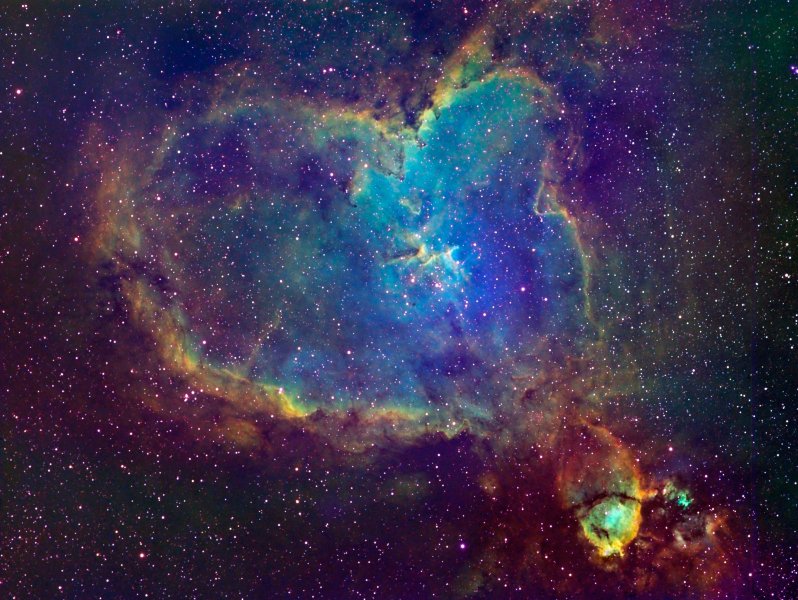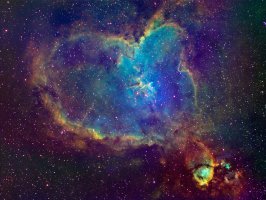IC 1805, the Heart Nebula |
||
 |
||
|
||
| Cederblad 214 and IC 1396, listed elsewhere in
this site, make themselves at home in the constellation of
Cepheus. Cepheus' queen, Cassiopeia, is itself home to a few
beautiful nebulae as well. Cassiopeia is far more conspicuous
than Cepheus: it is a bright, "W"-shaped (or "M"-shaped,
depending on the time of year) constellation riding high in the
night sky during Northern Hemisphere autumns. IC 1805, or the Heart Nebula, lies within the borders of Cassiopeia. This object is very large and faint, and is a challenge to see visually. Dark skies and larger telescopes are prerequisites to even try this object visually (I haven't!). Long-exposure photographs have revealed the extent of this nebula and similar surrounding objects. Like many emission nebula, IC 1805 is a busy star-forming region. Melotte 15 is the designation given to the star cluster at the center of the "heart". |
||
| Constellation: Cassiopeia | ||
| When Visible: August - January | ||
| Distance: 6,000 Light-years | ||
| Date: August 2006 | ||
| Location: West Chester, Ohio | ||
| Exposure Details:
H-alpha: 8 x 30 minutes Binned 1x1 (mapped to Green in Hubble Palette) SII: 8 x 30 minutes Binned 1x1 (mapped to Red in Hubble Palette) OIII: 10 x 30 minutes Binned 1x1 (mapped to Blue in Hubble Palette) |
||
| Equipment Used: Takahashi FSQ-106N on a Takahashi EM200 Temma-PC mount. SBIG STL-6303 camera with 5-position filter wheel and Astrodon narrowband filters. Externally guided with an SBIG Remote Guide Head on a Borg 76ED refractor. | ||
| Acquisition Software : MaximDL, TheSky6 | ||
| Processing Software: MaximDL, Photoshop CS, IrFanView | ||


